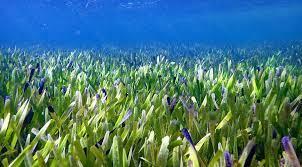About SSFP
About Us
Student Application
Subscribe to Our Newsletter
SSFP in the News
Members of Our Publishers Circle

Scientists sampling 10 different seagrass meadows off the coast of Australia were surprised to find that their samples were all from one plant. They had stumbled upon a seagrass that regrows by cloning itself.
The seagrass Posidonia australis, better known as Poseidon’s ribbon weed, is the largest living organism in the world, covering more than 70 square miles. Coincidentally, it is also the oldest plant in the world estimated to be about 4,500 years old. The ribbon weed currently resides across the Shark Bay in Western Australia.
Poseidon’s ribbon weed has unusual genetics. Usually plants inherit half of each parent's genetic information, known as a genome; however, the ribbon weed inherited the full genome of each parent. This is known as a polyploid plant, and these kinds of plants can continue growing and developing when left undisturbed. The seagrass wasn’t reproducing sexually as most plants do; it actively clones itself. It is also a hybrid of two plant species.
In 2010 and 2011 a heatwave struck Shark Bay’s ribbon weed. It was heavily impacted, but began repairing itself almost immediately, adjusting to its surroundings after the heat wave by cloning itself. Scientists think that this plant is abnormally well adapted to its environment and that could be the reason as to why it regrows the way it does. It accommodates better than the seagrass species that reproduce sexually, which is typically a slow process.
This seagrass is truly incredible. Western Australia is extremely lucky to be home to such a groundbreaking plant.
[Sources: smithsonianmag.com]
Loading Comments...